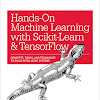The Turing Test approach
Turing (1950) "Computing machinery and intelligence"
The Turing Test
What capabilities would a computer need to have to pass the Turing Test?
- Natural language processing
- Knowledge representation
- Automated reasoning
- Machine learning
Turing predicted that by the year 2000, machines would be able to fool 30% of human judges for five minutes.
The cognitive modeling approach
Goal: Develop precise theories of human thinking
Cognitive Architecture
- Software Architecture for modeling human performance
- Describe task, required knowledge , major sub-goals
- Architecture follows human-like reasoning
- Makes testable predictions: Time delays during problem solving, kinds of mistakes, eye movements, verbal protocols, learning rates, strategy shifts over time, etc.
Problems:
- It may be impossible to identify the detailed structure of human problem solving using only externally-available data.
The laws of thought approach
- Idealized or "right" way of thinking
- Logic: patterns of argument that always yield correct conclusions when supplied with correct premises
- "Tom is a man; all men are mortal; therefore Tom is mortal."
- Beginning with Aristotle, philosophers and mathematicians have attempted to formalize the rules of logical thought
Logicist approach to AI: describe problem in formal logical notation and apply general deduction procedures to solve it
Problems with the logicist approach
- Computational complexity of finding the solution
- Describing real-world problems and knowledge in logical notation
- Dealing with uncertainty
- A lot of intelligent or "rational" behavior has nothing to do with logic
Thinking Rationally:
The Logical Approach
Ensure that all actions performed by computer are justifiable ("rational")
Facts and Rules in Formal Logic → Theorem Prover
Rational = Conclusions are provable from inputs and prior knowledge
Problems:
Representation of informal knowledge is difficulty
Hard to define "provable" reasoning
Turing (1950) "Computing machinery and intelligence"
The Turing Test
What capabilities would a computer need to have to pass the Turing Test?
- Natural language processing
- Knowledge representation
- Automated reasoning
- Machine learning
Turing predicted that by the year 2000, machines would be able to fool 30% of human judges for five minutes.
The cognitive modeling approach
Goal: Develop precise theories of human thinking
Cognitive Architecture
- Software Architecture for modeling human performance
- Describe task, required knowledge , major sub-goals
- Architecture follows human-like reasoning
- Makes testable predictions: Time delays during problem solving, kinds of mistakes, eye movements, verbal protocols, learning rates, strategy shifts over time, etc.
Problems:
- It may be impossible to identify the detailed structure of human problem solving using only externally-available data.
The laws of thought approach
- Idealized or "right" way of thinking
- Logic: patterns of argument that always yield correct conclusions when supplied with correct premises
- "Tom is a man; all men are mortal; therefore Tom is mortal."
- Beginning with Aristotle, philosophers and mathematicians have attempted to formalize the rules of logical thought
Logicist approach to AI: describe problem in formal logical notation and apply general deduction procedures to solve it
Problems with the logicist approach
- Computational complexity of finding the solution
- Describing real-world problems and knowledge in logical notation
- Dealing with uncertainty
- A lot of intelligent or "rational" behavior has nothing to do with logic
Thinking Rationally:
The Logical Approach
Ensure that all actions performed by computer are justifiable ("rational")
Facts and Rules in Formal Logic → Theorem Prover
Rational = Conclusions are provable from inputs and prior knowledge
Problems:
Representation of informal knowledge is difficulty
Hard to define "provable" reasoning
























No comments:
Post a Comment